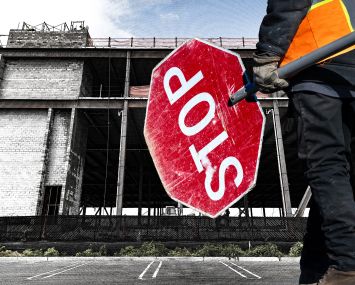Medical Offices a Hidden Healthy Gem in New York’s Real Estate Market
The footprint of health care service providers has increased dramatically in the past few years even as office and retail demand overall drops
By David M. Levitt July 11, 2023 8:00 am
reprints
In the now desperate search for professions resistant to working from home, medical is having a moment.
Keeping New Yorkers healthy and upright is becoming more of a dominating presence in the New York area in the days of the pandemic as well as after the pandemic. Health care service providers grew their occupancy by 16 percent in the region between 2019 and 2023, as both workforces and patient demand grew, according to a survey from brokerage CBRE.
In the meantime, the New York office market overall continues to struggle with historic availability as leases expire and owners have trouble lining up new tenants. The retail market, too, continues to confront an uneven recovery from the pandemic and one that has owners trying all sorts of experiential ways to fill space.
“Clearly, medical has helped the office market,” said William Hartman, a CBRE vice chairman. “They’ve been taking substantial office space over the last five or six years, and, in fact, their employment growth is growing more rapidly, and the medical folks know you kind of have to be in the office to do your work.”
Along with life sciences — which is shorthand for research into cures, new drugs and drug combinations, therapies and treatments for the whole panoply of human afflictions — medical treatments that cannot be done at home are growing in importance in the New York area and in the real estate they take up.
This is nothing new. Eds (education) and meds (the entire medical establishment) have long been the prescription for Midwestern cities like Pittsburgh and Cleveland that suffered due to the loss of their manufacturing bases.
What’s new is that the health care industry has been taking advantage of the pandemic and the dropoff in commercial real estate pricing induced by remote work and higher interest rates to expand its footprint and influence, said Timothy Savage, faculty co-director of New York University’s School of Professional Studies’ Applied Analytics Lab and a faculty member at NYU’s Schack Institute of Real Estate.
“As we walk the streets of New York, we’re seeing many, many more medical office locations open,” Savage said. “Something that was relatively rare even a decade ago has seemingly become ubiquitous.”
And new residential neighborhoods such as the West Side’s Hudson Yards and Lower East Side’s Essex Crossing are also giving medical “a new frontier” given anticipated demand, CBRE researchers wrote in their report.
Savage said medical entrepreneurs have taken advantage of Manhattan’s surplus of retail space to open urgent care, walk-in clinics that connect directly with a medically needy public that doesn’t have either the time or the inclination to go to a conventional hospital emergency room.
“These locations, they typically house doctors and nurse practitioners,” he said. “If you have a cold, if you’re concerned about COVID, these are an easy and convenient place to go, and are typically recognized by insurance. New York has a history of using ground-floor retail space for what we now call medical office. I see it, frankly, as a natural evolution of the idea. What were functionally dentist’s offices and outpatient care have become a form of urgent care.”
It’s also a great way to avoid at least some of the falling values in skyscrapers that mainly house increasingly hard-to-refill offices. Medical providers are taking advantage of lower prices for commercial real estate, Savage said. Per the CBRE study, medical offices in the tri-state area were trading in 2022 at 6.7 percent more than in 2018 and 2019, third among major asset types behind only industrial and residential.
Part of this is the aging population. According to CBRE, about 20 percent of the New York tri-state’s population will be over the age of 65 by 2030, up from 17 percent in 2020. Out on Long Island, that number should be about 25 percent.
It may be too late for investors to take advantage of this. According to a study by CBRE rival Cushman & Wakefield, there was a steady rise in price per square foot for medical office buildings in the U.S. even through the pandemic, from about $325 in 2019 to about $370 in 2021. Since then, it has risen another $20 a square foot or so, to the low $390s a square foot in the first quarter of 2023.
Examined via average cap rates (the yield an investor can expect from the price paid, which works like a bond: the lower the yield, the higher the price), the price of medical office reached a low of 5.6 percent in the first quarter of 2022. A year later, it was 5.9 percent.
There are at least two caveats working against medical office. One is a notion making the rounds that life sciences is not as immune from remote work as one might surmise. In a June report, researchers from the investment firm Land & Buildings revealed that attendance at Alexandria Real Estate Equities’s office and lab buildings is down 50 percent compared to pre-pandemic attendance.
Alexandria (ARE), a Pasadena, Calif.-based real estate investment trust that specializes in life sciences, could suffer a 30 to 40 percent loss in shares, predicted Land & Buildings, which is led by Jonathan Litt, in its examination primarily of geolocation data from cellphones. Litt, a former Citigroup REIT analyst, likes to take contrarian positions on publicly traded commercial real estate companies, and his firm famously forecast early on in the pandemic many of the financial problems that office buildings now face.
Alexandria controls some 435 buildings across the country, including the Alexandria Center for Life Science, a medical research office park on the East River in Manhattan. Litt’s firm found that many of Alexandria’s largest tenants, such as the pharmaceutical firms Bristol Myers Squibb and Pfizer, offer their employees flexible work schedules and “generous” work-from-home policies, while “few if any of ARE’s top tenants require all employees to be in five days a week.”
In response, Alexandria Executive Chairman and founder Joel Marcus emailed the following statement: “The life science industry is a $5-plus-trillion secularly growing industry with $500-plus-billion of R&D funding this year. The value of the 24/7 mission-critical life science facilities to industry users for their intended use is based on the infrastructure and location housing the billions of dollars of scientific pipeline, and is never measured by foot traffic.”
The other caveat is about the industry’s energy draw. New York has adopted Local Law 97, which requires landlords to begin reducing buildings’ energy usage, in response to the challenges of climate change, starting in 2024, or face fines. Because of the law, health care tenants “will need to be more mindful of their energy use,” CBRE researchers wrote in their report.
Medical is notoriously greedy in its draw of power, given its long operating hours, sophisticated air filters and high-powered equipment, not to mention the demands of surgery and other intensive procedures.
“That is always a problem these days,” CBRE’s Hartman said. “They do have a lot of electrical needs. The equipment they put in and where they get their power from, those are areas that help drive those expenses. In an office building, generally they close down their offices after 10 o’clock at night, where very often in urgent care they’re running 24/7. By definition, it’s a much much more costly environment.”



